Hiring an Information Architect can be a game-changer for your organization's digital strategy. These professionals are the unsung heroes behind intuitive user experiences and well-structured information systems. However, many companies struggle to identify the right talent, often overlooking the nuanced skills that make a great Information Architect. It's not just about finding someone who can create wireframes or sitemaps; it's about discovering a strategic thinker who can translate complex information into user-friendly designs.
This comprehensive guide will walk you through the process of hiring an Information Architect, from understanding the role to conducting effective interviews. We'll cover everything you need to know to attract and select the best candidate for your team. For a deeper dive into the specific skills to look for, check out our detailed breakdown of Information Architect skills.
Table of contents
Why Hire an Information Architect?
Start by identifying your organization's information management challenges. Are users struggling to find data easily? Is your website navigation confusing? These are signs you might need an Information Architect.
Consider the following scenarios where an Information Architect can help:
- Redesigning a complex website or intranet
- Organizing large volumes of content or data
- Improving user experience across digital platforms
If these issues are ongoing and affecting productivity or user satisfaction, it's time to hire a full-time Information Architect. For short-term projects or initial assessments, consider working with a consultant to evaluate your information architecture needs.
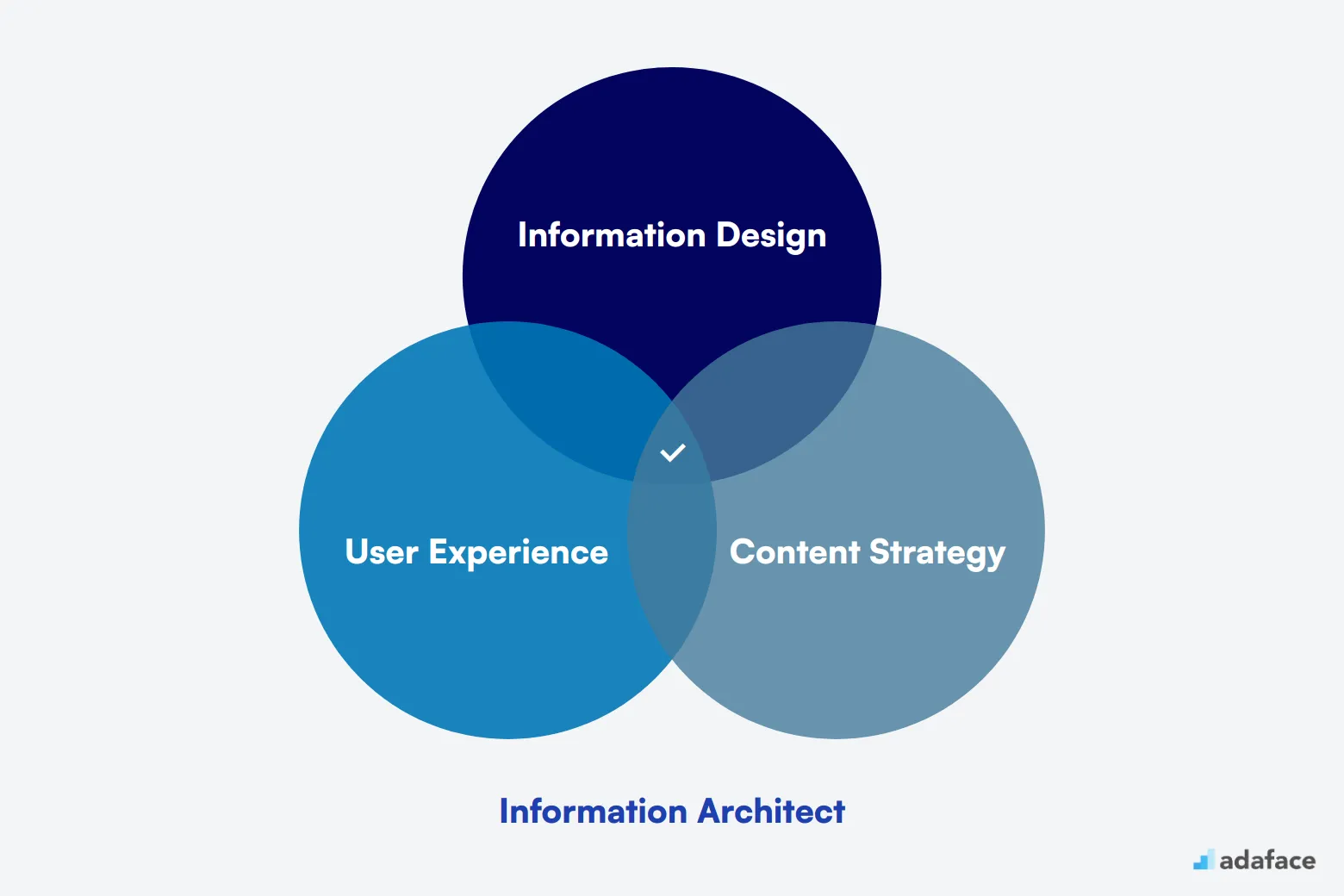
What Does an Information Architect Do?
An Information Architect (IA) designs and organizes digital information spaces. They create the structure and layout for websites, apps, and other digital products to make information easy to find and understand for users.
The day-to-day tasks of an Information Architect include:
- Conducting user research to understand how people interact with information
- Creating sitemaps, wireframes, and user flows
- Developing navigation systems and labeling schemes
- Collaborating with UX designers, developers, and content strategists
- Testing and refining information structures to improve user experience
Information Architect Hiring Process
The hiring process for an Information Architect typically spans over 1-2 months. It involves a series of structured steps to ensure you find the right candidate for your organization.
- Step 1: Create a detailed job description. This is critical as it will guide potential candidates on what to expect and help you attract the right talent.
- Step 2: Post the job on relevant platforms and expect to receive resumes within the first week.
- Step 3: Shortlist candidates based on their qualifications and experience. This can take a few days as you filter through applications.
- Step 4: Conduct skill assessments tailored to the Information Architect role. This may include practical tests or case studies, and expect this to take around a week.
- Step 5: Move on to the interview stage. Engage shortlisted candidates in discussions to gauge their fit for the role and your company culture.
- Step 6: Finally, extend an offer to the best candidate. This stage may involve negotiations and pre-employment checks.
In summary, the hiring process for an Information Architect requires careful planning and execution. Expect a timeline of about 1-2 months, depending on your pace. Each step is designed to evaluate candidates effectively, and we will explore these steps in detail in the following sections, providing checklists and resources along the way.
Key Skills and Qualifications to Seek in an Information Architect
Hiring an Information Architect requires a precise understanding of the skills and qualifications that align with your organization's needs. Creating a candidate profile can be tricky; what's considered essential for one company might only be a nice-to-have for another. It’s important to differentiate between required and preferred skills to attract the right candidates.
An ideal Information Architect should have a solid educational background and relevant experience. Here’s a breakdown of the key skills and qualifications to consider:
| Required skills and qualifications | Preferred skills and qualifications |
|---|---|
| Bachelor's degree in Information Science, HCI, or related field | Master's degree in Information Science or related field |
| 3+ years of experience in information architecture or UX design | Experience with content management systems |
| Proficiency in creating sitemaps, wireframes, and user flows | Knowledge of SEO best practices |
| Strong understanding of user-centered design principles | Familiarity with usability testing methodologies |
| Excellent analytical and problem-solving skills | Experience in Agile development environments |
How to Write an Effective Information Architect Job Description
Once you've defined the ideal candidate profile for your Information Architect role, the next step is crafting a compelling job description to attract top talent. Here are some key tips to make your posting stand out:
• Highlight key responsibilities and impact: Clearly outline the Information Architect's role in designing intuitive user experiences, organizing complex information, and improving overall site usability. Emphasize how their work will directly impact user satisfaction and business goals.
• Balance technical skills with soft skills: While technical expertise in UX design tools and information organization principles is crucial, don't forget to mention important soft skills. Look for candidates with strong communication abilities, analytical thinking, and collaboration skills to work effectively with cross-functional teams.
• Showcase your company's unique selling points: Highlight what makes your organization special, such as innovative projects, growth opportunities, or a collaborative work culture. This can help attract Information Architects who align with your company values and long-term vision.
Top Platforms to Hire Information Architects
Now that you have a well-crafted job description for your Information Architect role, the next step is to list it on job platforms to attract the right candidates. Finding the perfect platform can help you source skilled professionals who fit your organizational needs.
A leading professional networking site ideal for finding full-time Information Architects with extensive professional backgrounds and endorsements.
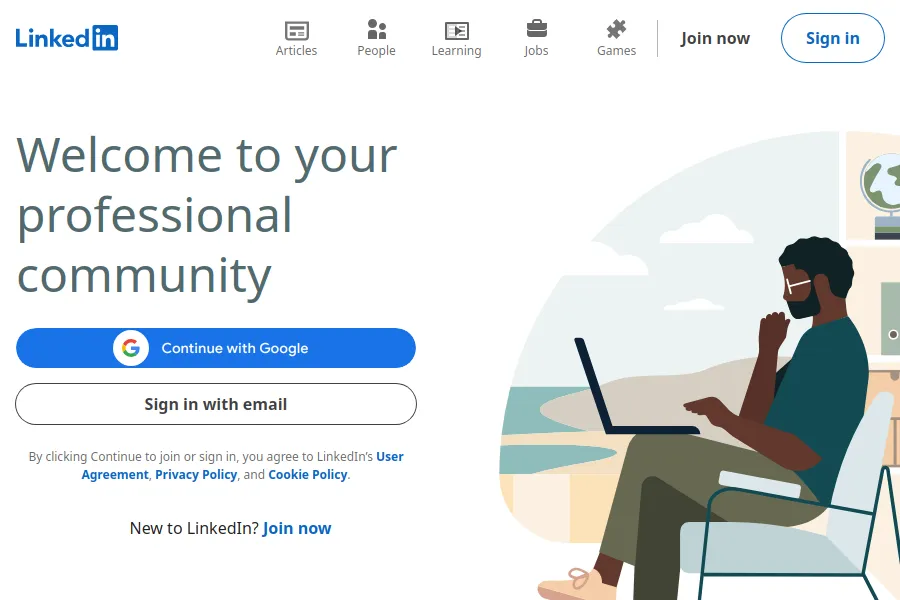
Indeed
A well-known job portal suitable for posting full-time positions with a large pool of job seekers and employers.
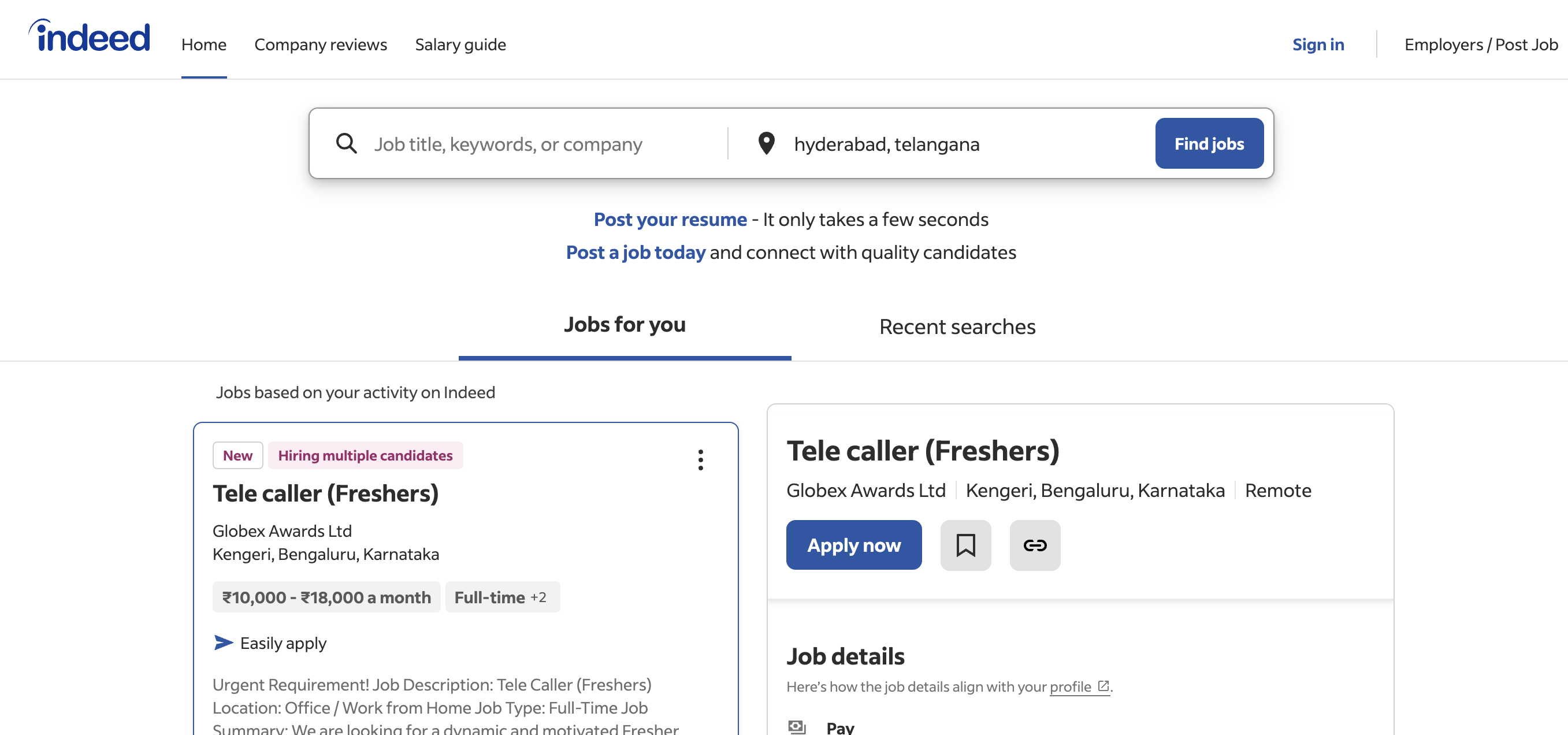
Upwork
A global freelancing platform that connects businesses with freelancers, perfect for hiring Information Architects for project-based work.
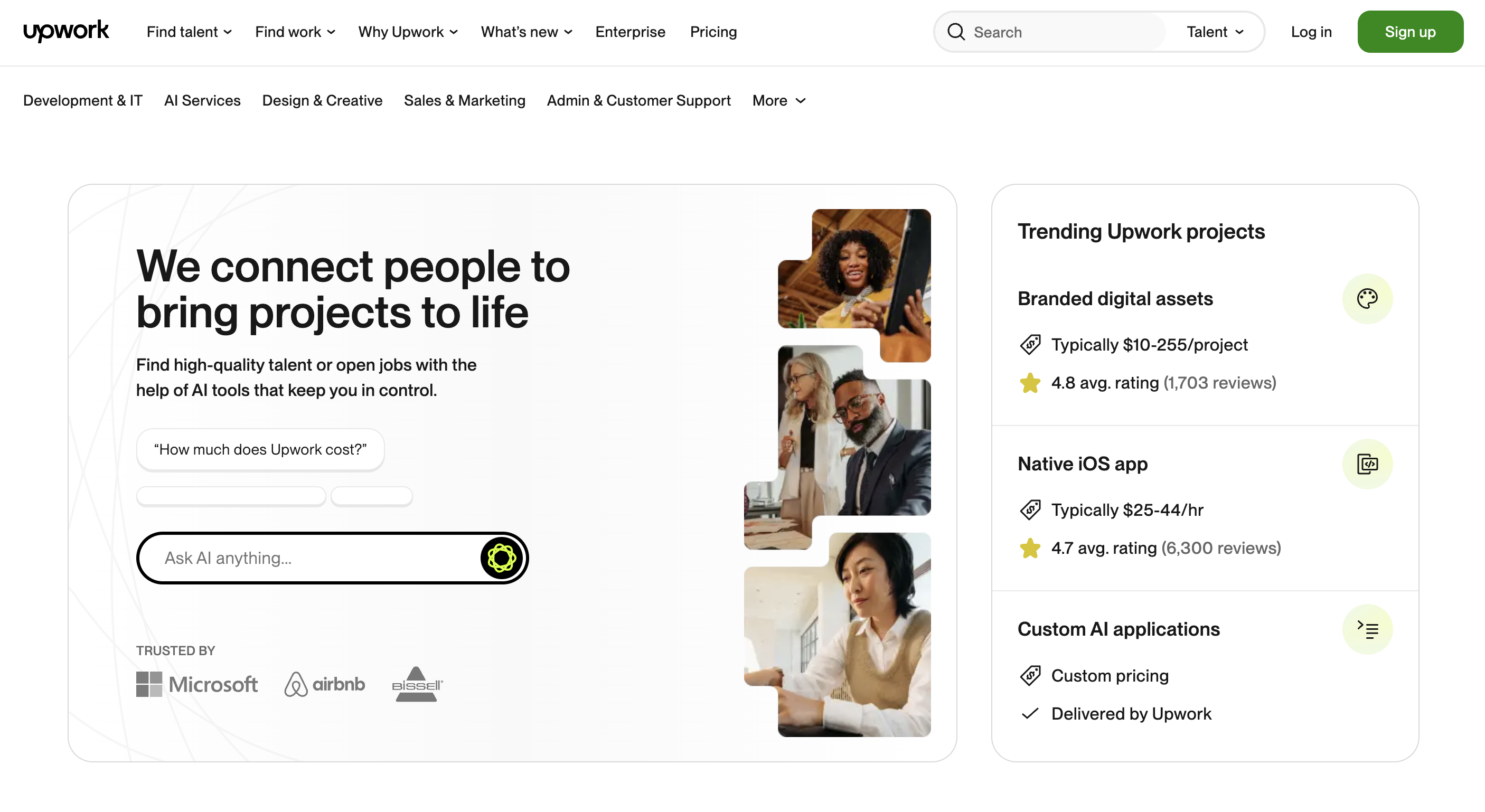
Beyond the initial platforms mentioned, consider exploring sites like FlexJobs for remote opportunities, or AngelList if you're eyeing candidates eager to work in a startup environment. Glassdoor can offer valuable insights into potential hires by providing company reviews and salary information. Additionally, Dribbble is excellent for sourcing freelance Information Architects with a design angle. Remote.co caters to those looking for remote work, while Monster and Stack Overflow Jobs are great options for full-time and tech-savvy professionals, respectively. For more tips on attracting top talent, you can read this detailed guide.
Keywords to Look for in Information Architect Resumes
Resume screening is a key step in finding the right Information Architect. It helps you quickly identify candidates with the most relevant skills and experience before investing time in interviews.
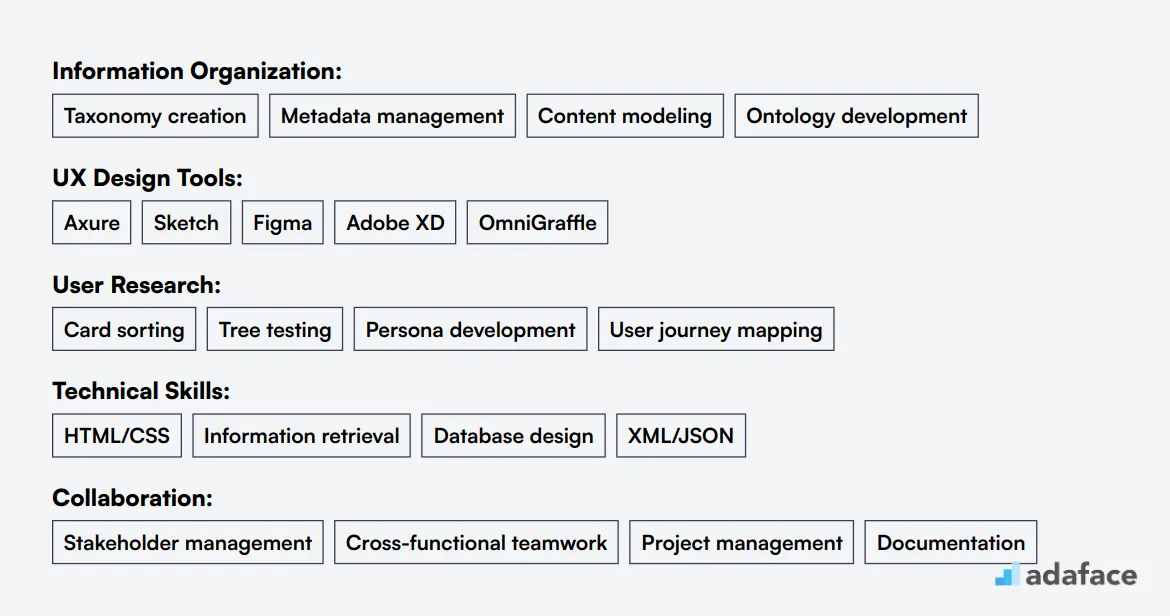
When manually screening resumes, focus on key terms related to information architecture and UX design. Look for mentions of sitemaps, wireframes, and user flows, as well as experience with tools like Axure, Sketch, or Figma.
AI-powered tools can streamline the screening process. You can use large language models like ChatGPT or Claude to analyze resumes based on specific criteria, saving time and reducing bias in initial candidate selection.
Here's a sample prompt for AI-assisted resume screening:
TASK: Screen resumes for Information Architect role
INPUT: Resumes
OUTPUT: For each resume, provide:
- Name
- Matching keywords
- Score (out of 10)
- Shortlist recommendation (Yes/No/Maybe)
KEYWORDS:
- Information architecture
- UX design
- Sitemaps, wireframes, user flows
- Content strategy
- User research (card sorting, tree testing)
- Information organization (taxonomy, metadata)
- UX tools (Axure, Sketch, Figma)
- SEO best practices
Recommended skills tests for assessing Information Architects
Skills tests are an effective way to evaluate Information Architects' abilities beyond their resumes. They provide objective insights into a candidate's expertise and readiness for the role. Here are five key tests we recommend for assessing Information Architects:
UML Online Test: This test evaluates a candidate's proficiency in Unified Modeling Language, which is essential for Information Architects to create visual representations of system designs and user interactions.
Business Analyst Test: Information Architects often need strong analytical skills. A Business Analyst test assesses their ability to gather requirements, analyze data, and propose solutions to complex problems.
Data Modeling Test: Data modeling skills are critical for Information Architects to organize and structure information effectively. This test evaluates their ability to create logical and conceptual data models.
Software System Design Test: Information Architects should understand software architecture principles. A Software System Design test assesses their knowledge of design patterns, system components, and architectural styles.
Cognitive Ability Test: Beyond technical skills, Information Architects need strong problem-solving and analytical thinking abilities. A Cognitive Ability test can help evaluate these critical soft skills.
Structuring the Interview Stage for Hiring Information Architects
Candidates who pass skills tests should advance to technical interviews to further assess their hard skills. Skills tests are effective for filtering unfit candidates but may not pinpoint the best-suited individuals for the role. This is where tailored interview questions come into play, providing deeper insights into their capabilities and experience.
Consider asking candidates about their experience with information architecture design and how they approach organizing complex data. Inquire about their familiarity with user-centered design principles and how they apply these to create intuitive navigation structures. Test their problem-solving skills by asking about challenging architecture projects they have tackled. It's also beneficial to discuss their approach to staying updated with the latest industry trends. Finally, ask questions like how they ensure alignment between the information architecture and business goals. For a comprehensive understanding of what skills are required, refer to the skills required for information architect.
How much does it cost to hire an Information Architect?
Hiring an Information Architect in the United States typically involves a salary range from $94,015 to $202,965, with a median of $138,137. Salary variations depend on location, where cities like New York offer higher compensation around $152,678, compared to places like Albuquerque which is lower at $98,095.
Information Architect Salary in the United States
Information Architects in the United States earn a competitive salary. The average annual salary ranges from $94,015 to $202,965, with a median of $138,137.
Salaries vary by location. New York, NY offers the highest median salary at $152,678, while Albuquerque, NM has the lowest at $98,095. Denver, CO and Austin, TX also provide attractive compensation, with median salaries around $149,000.
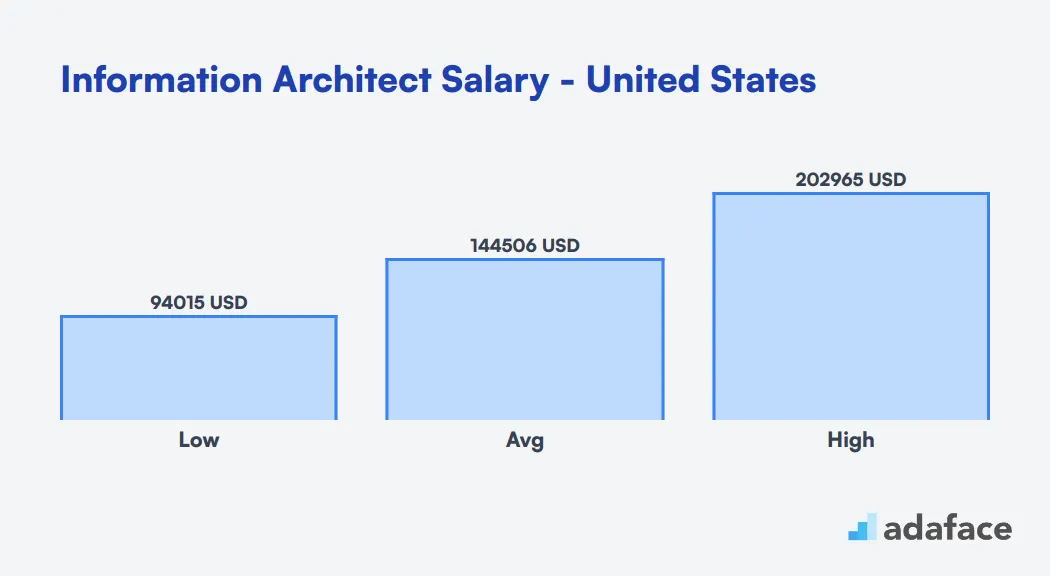
Information Architect Salary in the United Kingdom
The average salary for an Information Architect in the United Kingdom is approximately £50,000 per year. Entry-level positions may start around £35,000, while experienced professionals can earn upwards of £75,000 depending on the complexity of projects and industry. Factors like location and company size can also significantly influence these figures.
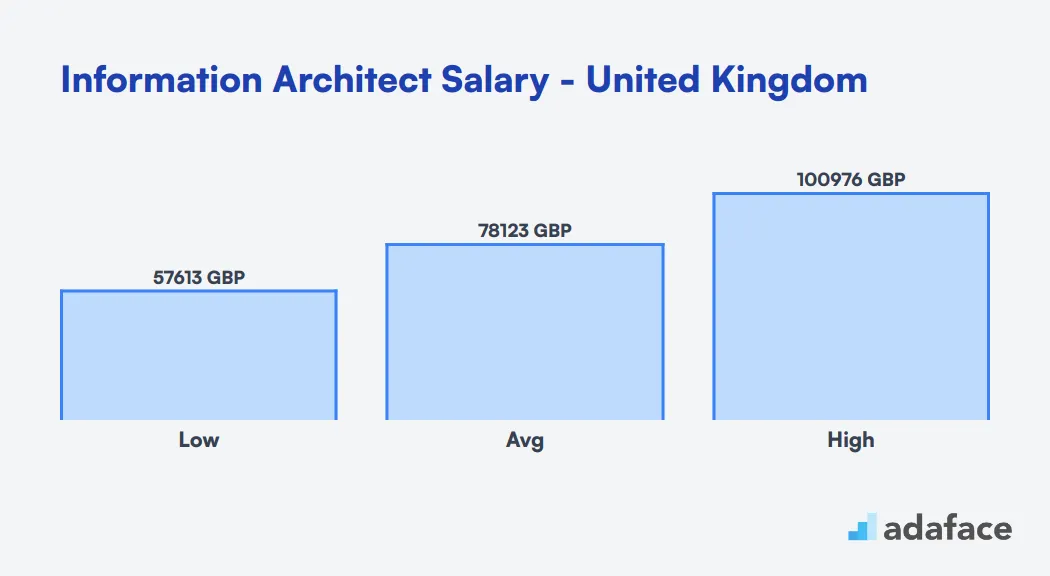
What are the ranks of Information Architects?
Information Architects often have various ranks within an organization, reflecting their experience and responsibilities. These ranks can differ between companies, but generally follow a progression from junior to senior levels.
- Junior Information Architect: Entry-level position for those starting their career. They typically work on smaller projects or assist senior architects with larger ones.
- Information Architect: Mid-level position with a few years of experience. They handle more complex projects independently and may mentor junior team members.
- Senior Information Architect: Experienced professionals who lead major projects and teams. They often contribute to strategy and decision-making processes.
- Lead Information Architect: Oversees multiple projects and teams. They're responsible for maintaining consistency across the organization's information architecture.
- Information Architecture Director: Top-level position that shapes the overall IA strategy for the company. They often work closely with other C-level executives to align IA with business goals.
As Information Architects progress through these ranks, their focus shifts from hands-on work to more strategic roles. Higher ranks require not just technical skills, but also leadership and business acumen.
Hire the Best Information Architects
Throughout this guide, we've explored the importance of hiring competent Information Architects, examined their roles, and detailed the hiring process. We also highlighted key skills to look for, how to draft an effective job description, and provided insights into interview structuring. These foundational steps are designed to equip you in making informed hiring decisions.
Remember, one critical takeaway is to use accurate job descriptions and appropriate skills assessments to ensure you select the right candidate. Implementing specialized tests like the Software System Design Online Test can significantly enhance your recruitment process. Aligning your strategies with these guidelines will help you hire professionals who can transform your information architecture landscape.
Business Analyst Test
FAQs
Look for candidates with a degree in Information Science, Human-Computer Interaction, or a related field. Key qualifications include experience with user research, information organization, and UX design. Familiarity with tools like Axure, Sketch, or Adobe XD is also beneficial.
Use a combination of portfolio reviews, practical tests, and scenario-based questions. Consider using software system design tests or UML tests to evaluate their technical skills.
Ask about their approach to information organization, experience with user research, and how they handle complex information structures. For a comprehensive list, check our Information Architect interview questions.
While there's overlap, Information Architects focus more on organizing and structuring information for optimal user navigation, whereas UX Designers concentrate on the overall user experience, including visual design and interaction patterns.
Look for proficiency in wireframing tools (like Axure or Balsamiq), diagramming software (like Visio or OmniGraffle), and possibly prototyping tools (like InVision or Adobe XD). Familiarity with analytics tools is also valuable.
While not always necessary, industry-specific knowledge can be beneficial, especially in fields with complex information systems like healthcare or finance. However, a skilled Information Architect should be able to adapt to various industries.
Key soft skills include excellent communication, problem-solving abilities, attention to detail, and the ability to collaborate with diverse teams. Strong analytical and critical thinking skills are also crucial.

40 min skill tests.
No trick questions.
Accurate shortlisting.
We make it easy for you to find the best candidates in your pipeline with a 40 min skills test.
Try for freeRelated posts
Free resources



